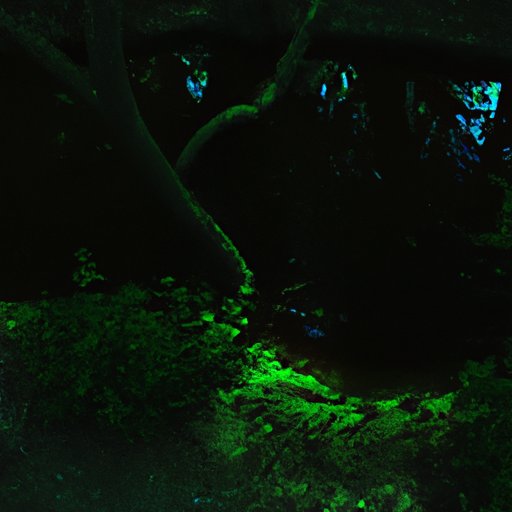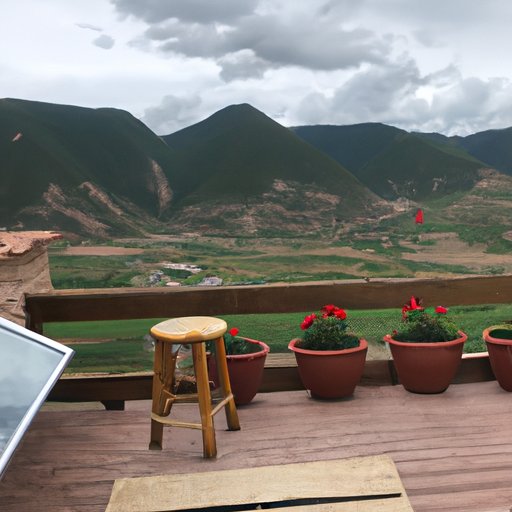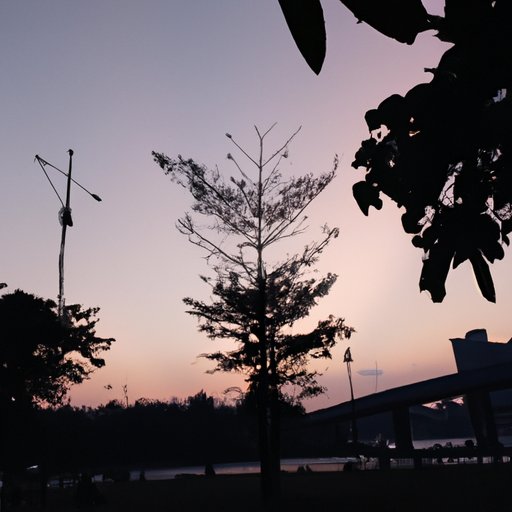Introduction
Creating vivid descriptions of scenery in writing can be difficult and challenging. Whether you’re writing a novel, essay, or short story, it’s important to be able to capture the beauty of a landscape with words. In order to do this effectively, you need to be able to evoke the five senses through descriptive language and provide details about what the scenery looks, smells, sounds, tastes, and feels like. The purpose of this article is to provide helpful tips on how to create vivid descriptions of scenery in writing.

Utilize Sensory Details to Create Vivid Descriptions
The most effective way to create vivid descriptions of scenery is to use descriptive language to evoke the five senses. By providing details about what the scenery looks, smells, sounds, tastes, and feels like, readers will be able to imagine the scene more clearly. For example, if you’re describing a beach, you could include details such as the sound of the waves crashing against the shore, the smell of salt in the air, the feeling of the sand between your toes, etc. These types of sensory details help to bring the scene to life and give readers a better understanding of what the scenery looks like.
Use Vivid Verbs and Adjectives to Paint a Picture with Words
Using vivid verbs and adjectives is another great way to create vivid descriptions of scenery in writing. Examples of powerful verbs and adjectives include “lush,” “sparkling,” “ravishing,” “serene,” “brilliant,” “dazzling,” “gleaming,” “majestic,” “glittering,” “breathtaking,” and “stunning.” Using these types of words will help readers to visualize the scene more clearly, as they are more evocative than common verbs and adjectives. Additionally, there are certain techniques that you can use to make sure that your verbs and adjectives are used effectively. For example, you can use alliteration (repeating the same letter or sound) to emphasize certain elements of the scene. You can also use contrasting words to create tension and draw attention to certain elements of the scenery. Finally, you can use descriptive phrases to create vivid images of the scenery.

Include Physical Characteristics of the Scenery
When describing scenery, it’s also important to consider the physical elements of the scene. For example, if you’re describing a forest, you should include details about the trees, the plants, the rivers, the mountains, etc. You should use detail-oriented language to describe these elements, such as the type of trees, the size of the mountains, the color of the rivers, etc. These types of details will help to create a more vivid image of the scenery in the reader’s mind.

Describe the Atmosphere and Mood of the Scene
In addition to the physical elements of the scene, it’s also important to describe the atmosphere and mood of the scenery. Focus on the emotions that the scene evokes and use descriptive words to capture the atmosphere. For example, if the scenery is peaceful and serene, you can use words such as “tranquil,” “calm,” and “soothing.” If the scenery is mysterious and eerie, you can use words such as “ominous,” “haunting,” and “eerie.” These types of words will help to create a more accurate representation of the atmosphere and mood of the scenery.
Create a Metaphor or Simile to Emphasize Certain Elements
Using metaphors and similes is another great way to emphasize certain elements of the scenery. For example, you can use a metaphor to compare the scenery to something else, such as “the sky was a blanket of stars” or “the lake was a mirror reflecting the night sky.” Alternatively, you can use a simile to make a comparison between two things, such as “the waves crashed against the shore like thunder” or “the moonlight shone through the trees like silver ribbons.” Metaphors and similes can help to emphasize certain elements of the scene and make the description more vivid.
Conclusion
Writing vivid descriptions of scenery can be difficult, but it doesn’t have to be. By utilizing sensory details, using vivid verbs and adjectives, including physical characteristics of the scenery, describing the atmosphere and mood of the scene, and creating metaphors and similes, you can create detailed and evocative descriptions of any type of scenery. With these tips, you’ll be able to create beautiful and vivid descriptions of scenery in your writing.
(Note: Is this article not meeting your expectations? Do you have knowledge or insights to share? Unlock new opportunities and expand your reach by joining our authors team. Click Registration to join us and share your expertise with our readers.)
